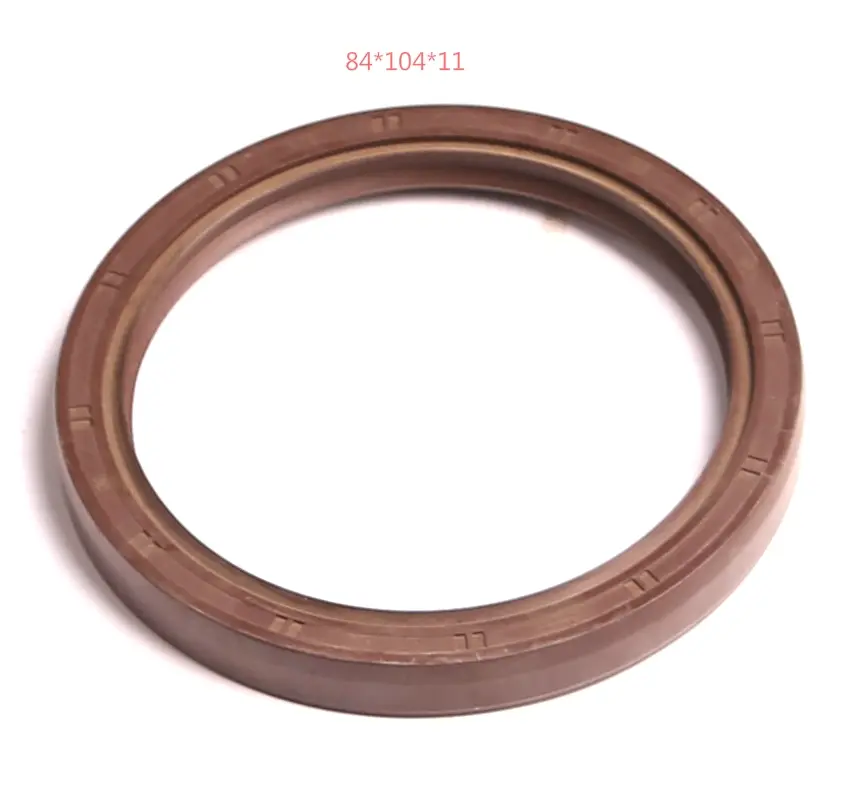Where to buy oil seals in the UK
If you have any technical questions regarding oil seals, or opinions/thoughts on these Bearing Trivia pages, please feel free to contact us using the following form:
High-Pressure Rotary seals that are used for high-pressure applications have a solid cross-section, are developed to seal a pressurized lubricant, and possess hydrodynamic waves that encounter the pressurized lubricant. These fluid waves pump lubricant into the engaged sealing interface when the shaft spins.
The introduction of skeleton oil seals
Generally said that the oil seal refers to the skeleton oil seal.The function of the oil seal is generally to isolate the parts that need lubrication in the transmission parts from the external environment, so as not to let the lubricating oil leak.The skeleton acts like the steel bars in a concrete member to strengthen and keep the seal in shape and tension.According to the structure, it can be divided into single lip skeleton oil seal and double lip skeleton oil seal.The auxiliary lip of the double lip skeleton oil seal plays a dust-proof role, to prevent the outside dust, impurities and so on into the machine.According to the frame type, it can be divided into inner frame oil seal, exposed frame oil seal and assembled oil seal.According to working conditions, it can be divided into inner frame oil seal, exposed frame oil seal and assembled oil seal.According to working conditions, it can be divided into rotating frame oil seal and round-trip frame oil seal.Used for gasoline engine crankshaft, diesel engine crankshaft, gearbox, differential, shock absorber, engine, axle and other parts.
The skeleton oil seal structure is composed of three parts: oil seal body, strengthening framework and self-tightening spiral spring.The sealing body is divided into the bottom, waist, cutting edge and sealing lip according to different parts.Generally, the inner diameter of the skeleton oil seal in the free state is smaller than the shaft diameter, that is, it has a certain amount of interference.
Therefore, when the oil seal is loaded on the oil seal seat and shaft, the pressure on the edge of the oil seal and the contraction force of the self-tightening spiral spring produce a certain radial tightening force on the shaft. After a period of operation, the pressure will rapidly decrease and even disappear. Therefore, the self-tightening force of the oil seal can be compensated at any time with the spring.
HB bsetseals specialized in producing TC, SC, TG, TB, TA, DC, TCV, TCN, cassette, combi oil seals. The oil seals quality is very good and approved by customers from all over the world. We also can make mold for non-standard type and dimensions of oil seals.
Atlas
PTFE
In different applications like tyres, belts, and oil seals, situations where resistance to fatigue with improved life span is desired, and in gaskets, and electronic and electrical equipment, conventional type rubbers are reinforced with filler materials to enhance their physical, electrical, thermal, and mechanical properties. Compared to the conventional rubber/rubber composite-reinforced fillers, the addition of nanomaterials has gained extra attention in recent years, and these are called nanocomposites [40,61]. Nanomaterials have unique properties which are changed due to their size reduction in any one dimension, like chemical (reactivity or catalysis), thermal (melting temperature), electronic (electrical conductivity), optical (scattering or absorption of light), or magnetic (magnetization) properties [40]. Among various types of nanomaterials, CNTs are one of the most attractive reinforcements used in the rubber nanocomposites, due to their high aspect ratio, flexibility, diameter in the nano range, and physical, mechanical, and electrical properties along the axis of the tube. MWCNTs have greater advantages than SWCNTs or DWCNTs in the range of possible industrial applications and low production cost, which can also provide similar composite properties [40,62,63]. In nanocomposites, uniform dispersion of the CNTs plays a very important role in increasing the properties of the developed material. This is because of the bonding between the nanotubes being very high and ending up in a cluster formation [63]. In recent research, MWCNTs/SWCNTs were used as reinforcements and mixed with caoutchouc or natural rubber matrix material to obtain an MWCNT/SWCNT–natural rubber nanocomposite (nanostructures), by adding the CNTs into a polymer solution like acetone, dimethyl formamide, toluene, or tetrahydrofuran and mixing either by high-energy sonication, magnetic agitation, or mechanical mixing. Simultaneously, in addition to the poor solution, the solvent gets evaporated and obtains better dispersion of nanotubes. It is a better method to achieve uniform dispersion and distribution of nanotubes into the matrix material. One major constraint for this method is neglecting the improper solubility of polymer into the solvent to carry out the next process [40]. Also, MWCNTs improved the mechanical and electrical properties of other types of rubbers, such as chloroprene, acrylonitrile–butadiene, styrene butadiene rubber, and ethylene–propylene–diene monomer [62].
 These advancements have opened new doors in air purification systems and solar energy conversion These advancements have opened new doors in air purification systems and solar energy conversion
These advancements have opened new doors in air purification systems and solar energy conversion These advancements have opened new doors in air purification systems and solar energy conversion

 They can be easily cut and shaped to fit a variety of applications, making them a versatile solution for sealing gaps and joints They can be easily cut and shaped to fit a variety of applications, making them a versatile solution for sealing gaps and joints
They can be easily cut and shaped to fit a variety of applications, making them a versatile solution for sealing gaps and joints They can be easily cut and shaped to fit a variety of applications, making them a versatile solution for sealing gaps and joints